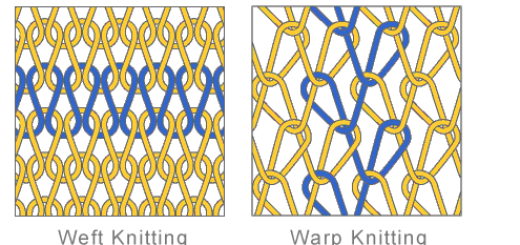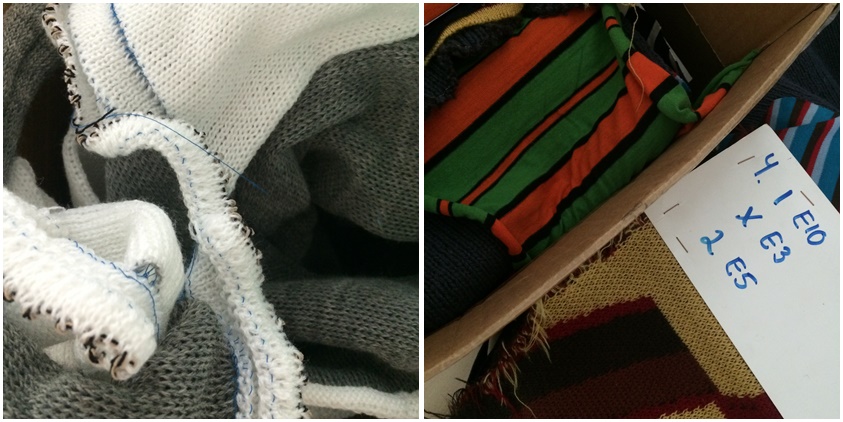After learning basics about textile materials, the day after we had a lecture about knitting - one of the two main ways to make a fabric. What waited for us was learning how are knitted fabrics formed, which machines do we use for making them and how do we categorize knitted fabrics. After the lecture, we had a small, fun group assignment.
Starting from the basics about knitting, we got familiar with term "loop" which is a stitch pulled through another loop with knitting needle. That process is called interlooping. Knitted fabrics are divided into warp knitted fabrics and weft knitted fabrics (according to direction of knitting).
Starting from the basics about knitting, we got familiar with term "loop" which is a stitch pulled through another loop with knitting needle. That process is called interlooping. Knitted fabrics are divided into warp knitted fabrics and weft knitted fabrics (according to direction of knitting).
If we have warp and weft knitted fabrics, we have to have machines that produce them. That's why we divide machines into warp knitting machines and weft knitting machines. Warp knitting machines and weft knitting machines ( flat and circular). Warp knitting machines are used to produce underwear, lace and swimsuits. We concentrated a bit more on flat and circular machines (that we will have chance to see in knitting lab next week) mentioning that circular machines are very fast and used for making socks, sweater bodies, yardage etc. (picture below) and flat machines are used for making parts or full-fashioned pieces, but are a bit slower. Flat knitting machines are also used for making "cut&sew" garments.
Our small group assigment was to guess a gauge of the fabric (number of needles per inch ; " E number ") which tells us how fine is the stitch (usually measuerd on the machine). We had few samples for which we had to guess gauge, material and if the fabric is made on flat or circular machine. These are some of the fabrics we analysed:
Later we talked about differences between warp and weft knitted fabrics. Some interesting facts about weft knitting is that there are more possibilites for design, it can knit shaped garments and it can make finished edges, in contrast to warp knitting which has higher productivity, it can mae only flat fabrics and it can produce only yardage.
What is waiting for us is going to Knitting lab to see how all these machines work which is, I believe, going to be an amazing experience for me.
What is waiting for us is going to Knitting lab to see how all these machines work which is, I believe, going to be an amazing experience for me.



 RSS Feed
RSS Feed
